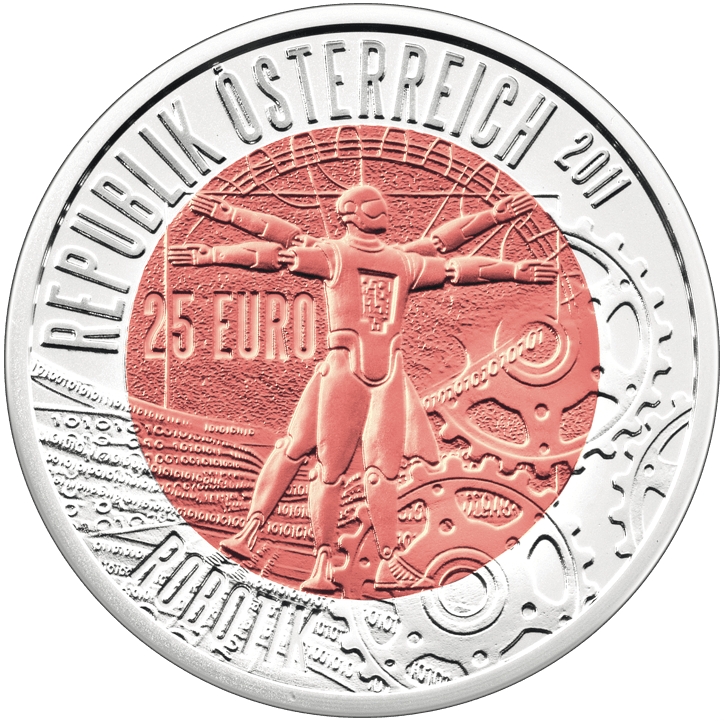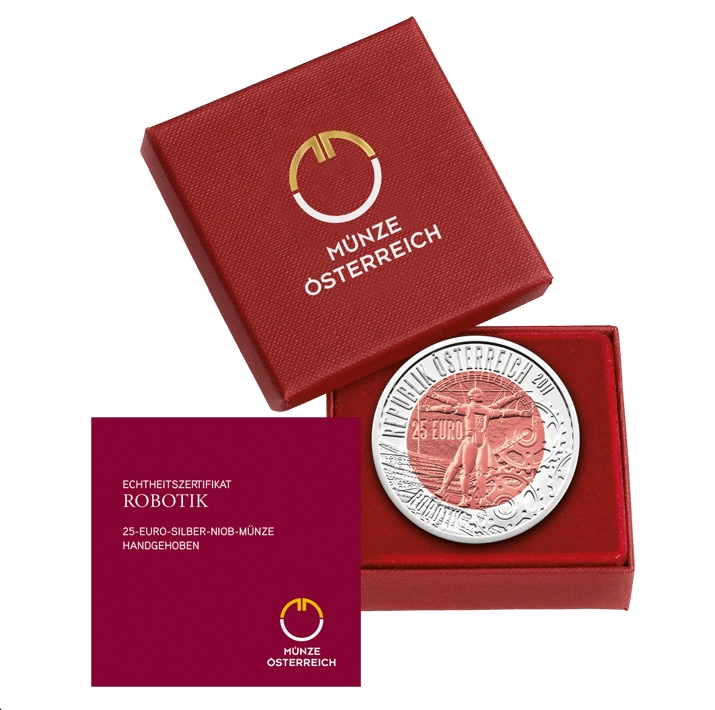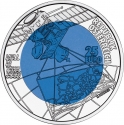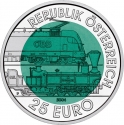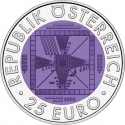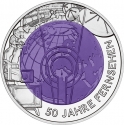You are about to finish your registration. Please check your mailbox (including spam folder). There should be a letter with a confirmation link. Check setting to make sure that your e-mail address is correct.
Send letter againDescription
The 25 euro coin struck by the Austrian Mint in 2011, entitled "Robotics", features robotics, a field concerning electronics and mechanics, as its main motif. The niobium center is red in color, a reference to Mars, which is used as the motif for the reverse of the coin.
Each coin contains 9 g of 900 Fine Silver in its outer ring and 6.5 g of 998 pure niobium. Niobium was chosen for the core due to its workability as a coinage metal and its low reactivity (which prevents its corroding where it comes in contact with the silver ring). Niobium’s larger application is in the aerospace industry, making it a thematic fit with the series, whose designs have focused on achievements in science and engineering. Each piece is encapsulated, boxed and comes complete with a numbered certificate guaranteeing its authenticity.
Obverse

|
Symbolizing the fusion between electronics and mechanics, fundamental in robotics, the intricate illustrations on the obverse of this cutting-edge piece feature mechanical cogs and digital binary coding. In its center a robotic version of Leonardo da Vinci’s Vitruvian Man typifies ideal human proportions in the place of a human being, set against the mars-red background of the niobium core. This color is a reference to the coin’s reverse. REPUBLIK ÖSTERREICH 2011 |
|---|---|
Reverse

|
Depicts a mountainous Martian landscape with a European Space Agency robot exploring the red planet as a star-filled sky and planet Earth shine down from the coin’s silver edge. 1150 |
| Edge |
25 Euro
Silver Niobium Coin
Robotics
Subscribe series
KM# 3204
Silver Niobium Coin
Robotics
